Yellow-bellied Sapsuckers are a type of woodpecker. True to their name, these birds drill concentric, evenly-spaced holes on trees in order to get them to weep sap. This is the first food available for hummingbirds when they arrive in spring. Ruby-throated Hummingbirds also eat the flying insects attracted to the sap wells. The hummers dart about and use their tongues to snatch the insects in mid-air.
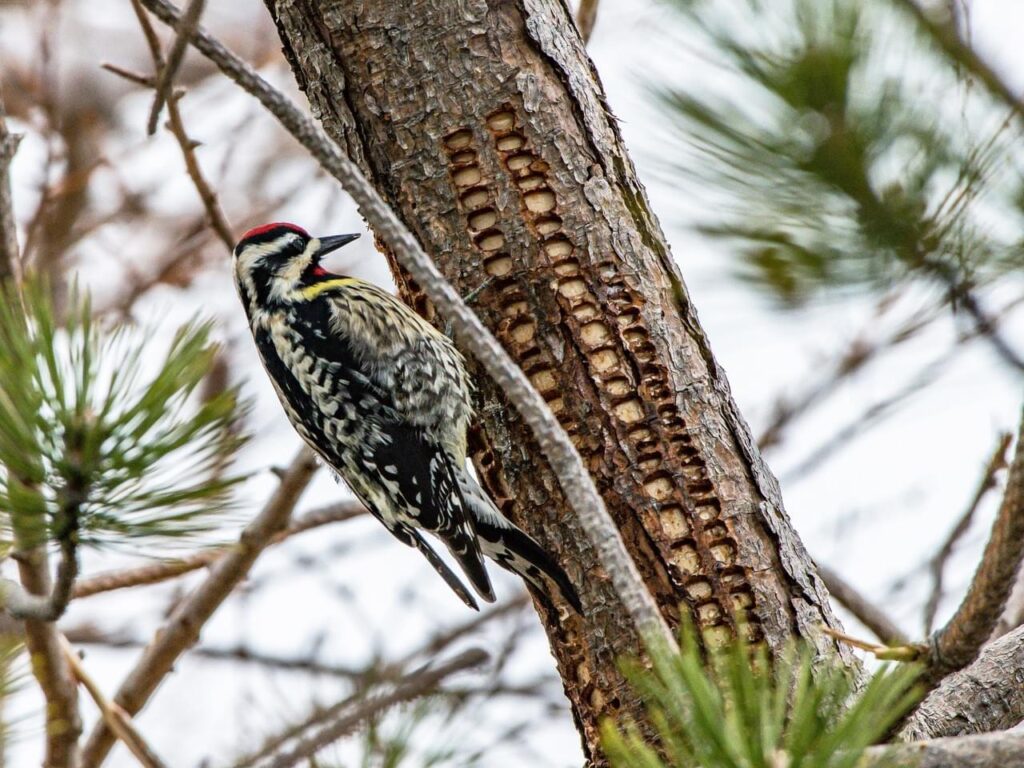
Yellow-bellied Sapsuckers are 8 1/2 inches from beak to end of tail and have a wingspan of 16 inches, yet weigh only 1.8 ounces.
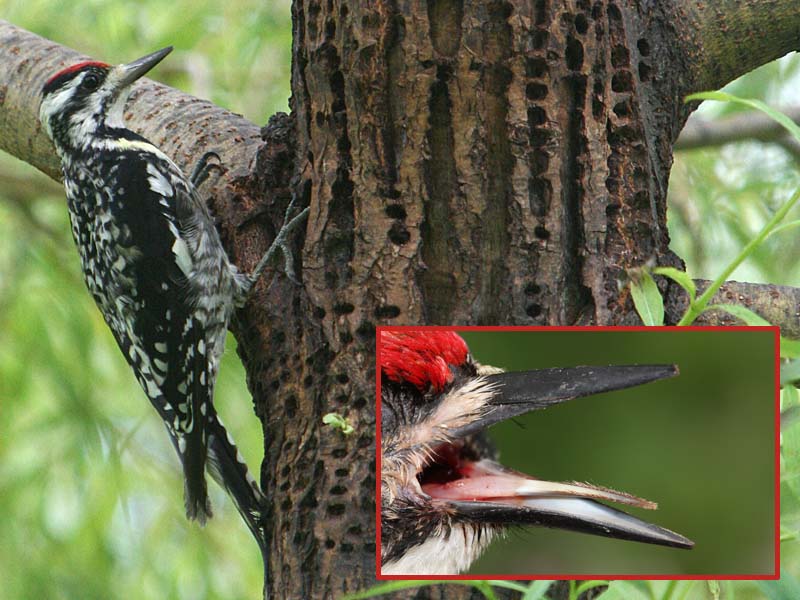
Sap comprises 20% of the annual diet and during certain periods it may be the only food consumed by Yellow-belled Sapsuckers. The brushy tongue is a great tool for gathering the liquid. Yellow-bellied sapsuckers also eat insects and spiders, fruit, seeds, aspen buds.
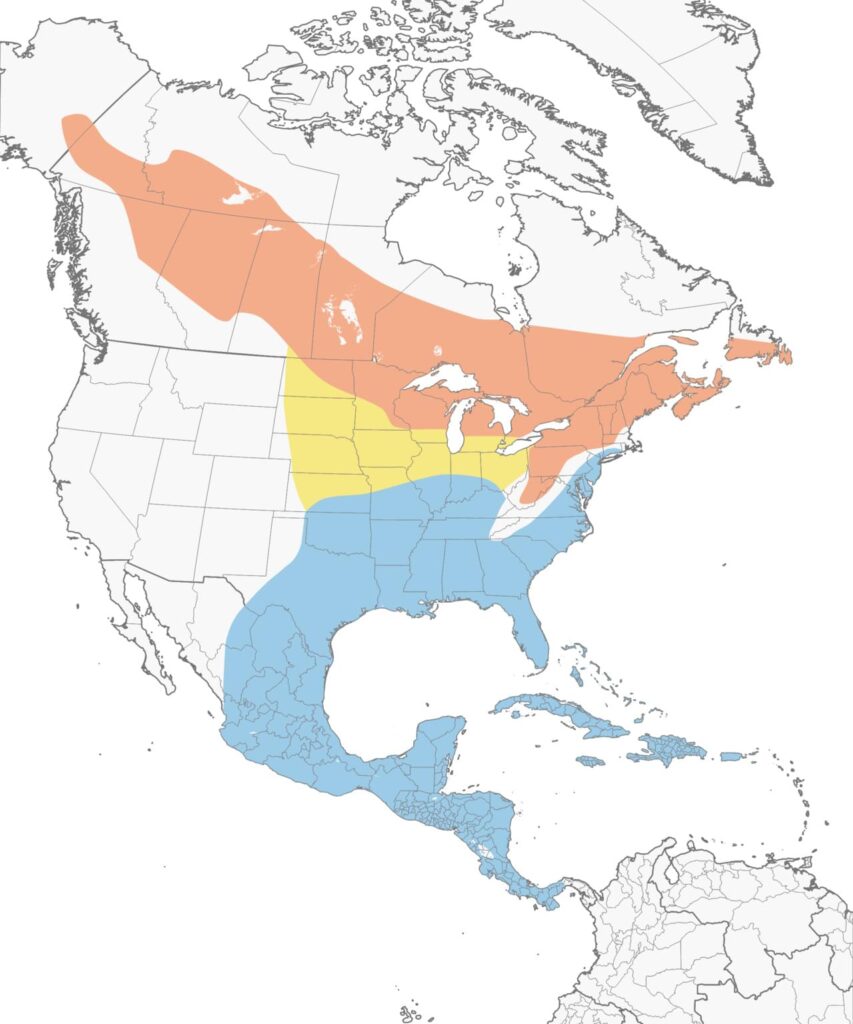
Yellow-bellied Sapsuckers migrate to this area from their wintering grounds in the southern U.S., Mexico, West Indies, and Central America, as shown by the blue area in the above map. The yellow areas of the map represents the part of the country where they pass through in migration, ending up in the areas indicated by red as their nesting destination.
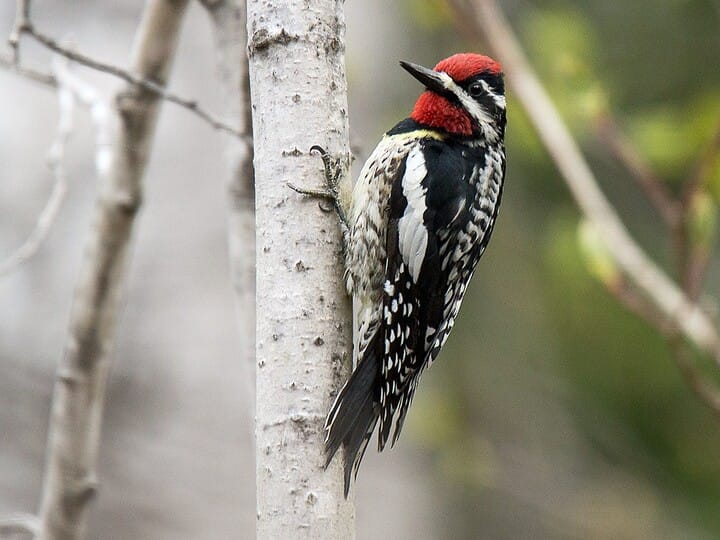
The male of this Sapsucker can be told by the bright red throat patch, which the female does not have. When displaying to proclaim their territory or to show off for the females, the male Yellow-bellied Sapsucker will point its’ beak up so that the red feathers of the throat are more visible.

The female Yellow-bellied Sapsucker has the black chest bib but is creamy where the male is red under the beak, she also has the red cap and the strong white edge to her fore-wing, as well as a strong white eye-bow and a whi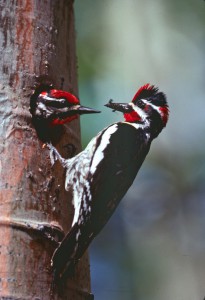 te line of feathers that runs from the beak and across the cheek.
te line of feathers that runs from the beak and across the cheek.
It takes the parents seven to ten days to create a nest cavity. Four to seven eggs are laid with both parents incubating and helping to feed the young. No lining is placed within the nest; the eggs are laid on wood chips left over from the excavation. The entrance hole is small, only about 1.5 inches in diameter, but the cavity itself may be 10 inches deep.
Yellow-bellied Sapsuckers are known to dip insects in sap before feeding them to young.
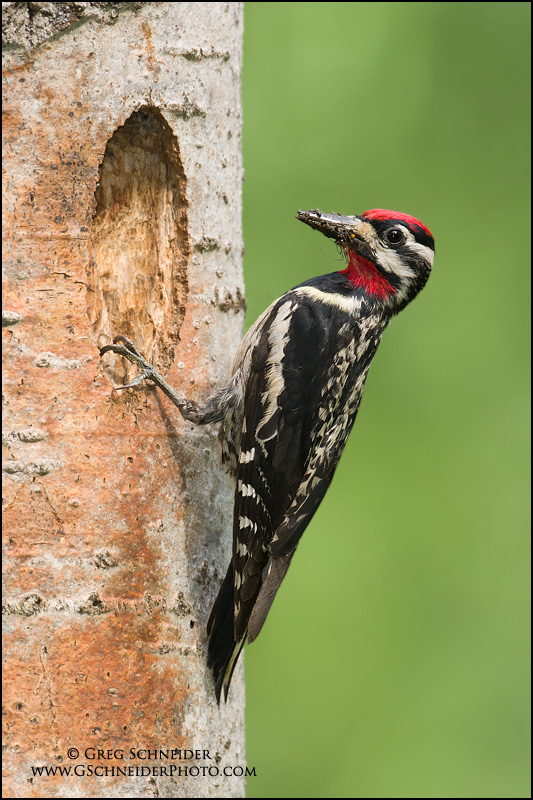
Of course, the goal is for healthy fledged youngsters, shown here looking very drab in comparison to its’ parents.
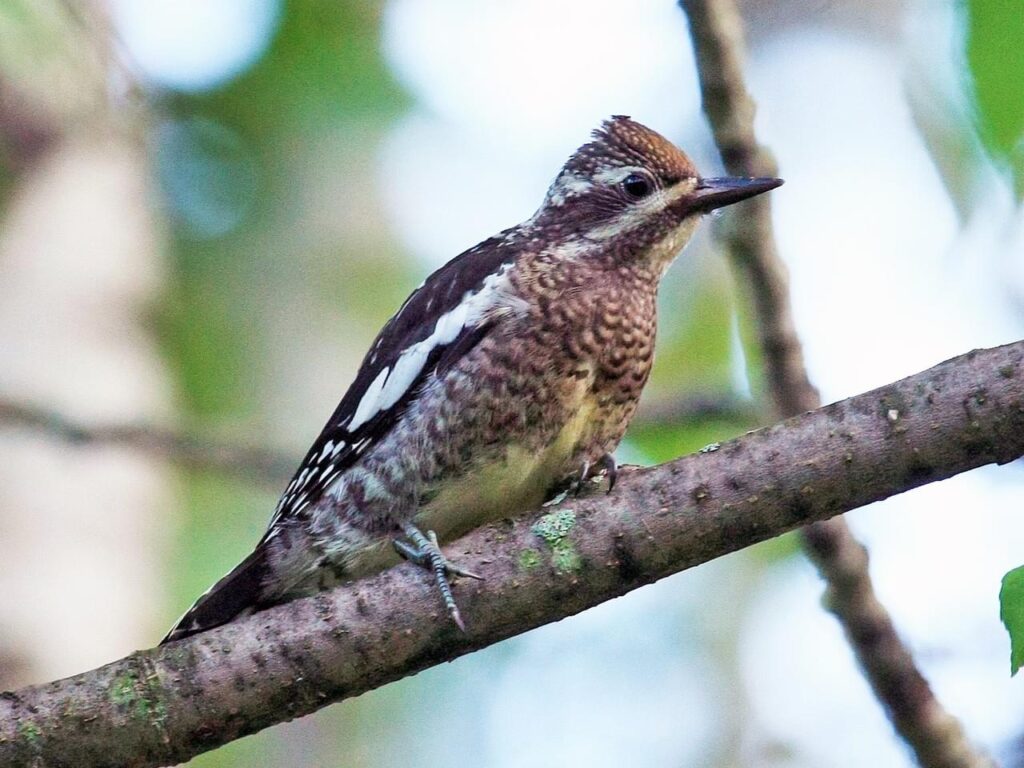
How can you help them make their epic journey and allow them to help hummingbirds? Educate all of the people you can about the importance of sap wells, of refraining from using pesticides that may be fed to the young Sapsuckers when the parents gather insects, use window collision prevention methods as they are not aware that they can’t fly through glass when they see the reflection of your trees, keep cats indoors to protect these migrants and their young. Enjoy your Birds !
